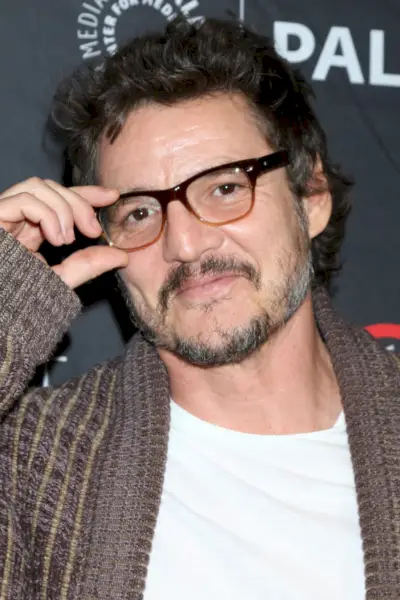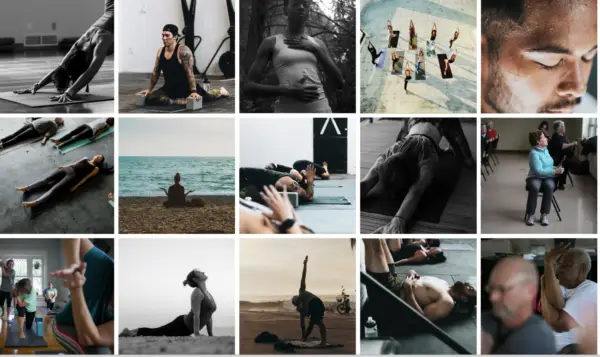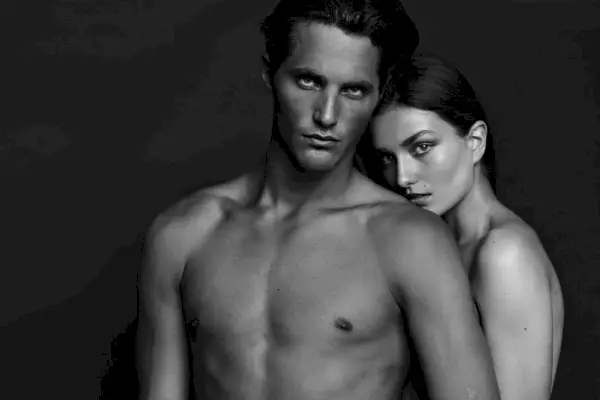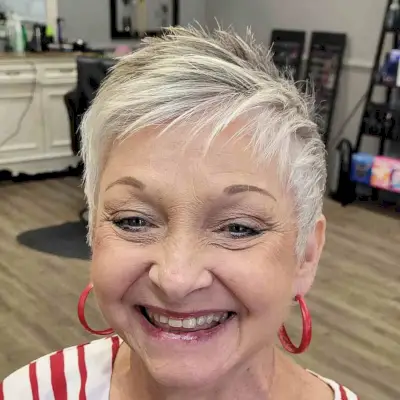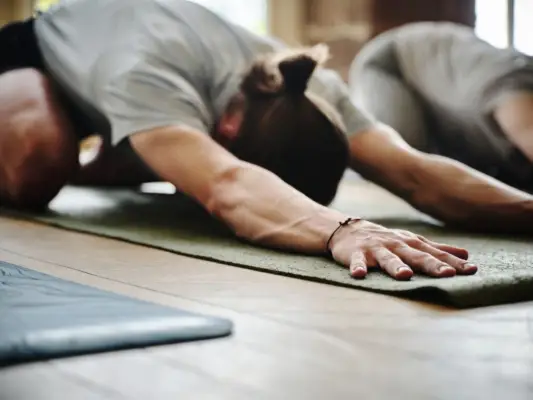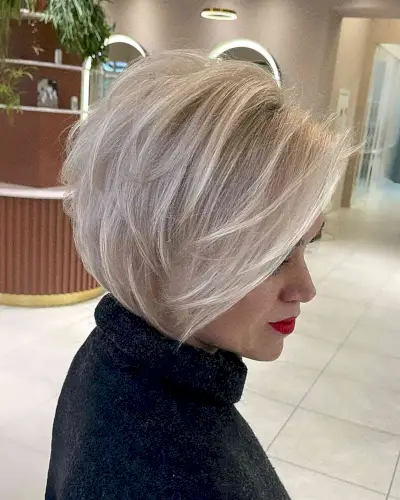Na faculdade, eu fiz muita corrida, giro e levantamento. (O cheiro daquela academia ainda permanece em algumas das minhas camisetas.) Eu estava fazendo tudo-exceto ioga. Não foi para mim. Uma sequência não era um treino real, então qual era o objetivo?
Sure, I had done a few recovery flows as a high school athlete and had attended a handful of classes here and there. (I knew what a Downward-Facing Dog was, don’t worry.) But at that point in my life, I was preoccupied with pushing my body to the point of exhaustion. A workout wasn’t a workout if I wasn’t dripping in sweat by the end of it. So when a friend asked me to go to CorePower’s yoga sculpt class with her, I hesitated, but ultimately, I was game. My rationalization: The class had weights, therefore, it counted as a workout.
That first yoga sculpt class was brutal. My muscles shook in the poses, beads of sweat dripped down my face, and I’m pretty sure I was panting during the cardio section. But it was in the gentle moments—the long Balasana (Child’s Pose), the hold in Warrior III (Virabhadrasana III), and, of course, Savasana —that I discovered that yogic stillness. This was something I hadn’t known I needed. I went looking for a workout, and I came out with a new desire to seek out a larger sense of calm. In a lot of ways, that yoga sculpt class was the catalyst for my current practice.
A história da escultura de ioga
O Yoga Sculpt oferece algo diferente de muitas classes de ioga. As classes que frequento geralmente incluem pesos, então deixo a sala sentindo que meus músculos estão realmente pegando fogo. (Não, isso não é um exagero.) É certamente um afastamento das raízes da prática, passando para um território de fusão de ioga que não é nada se não for complicado e controverso.
É difícil rastrear as origens precisas da escultura de ioga, mas pode ser ligada ao power yoga. A professora Beryl Bender Birch é creditada com o início do poder do poder em 1995 com a publicação de seu livro, Power Yoga. In an article for Stylesway Vip, she said she sought to design a class that was derived from Ashtanga but more accessible to those unfamiliar with yoga.
Most people wouldn’t take a class called Ashtanga Yoga, because they had no idea what it meant, she said. Power Yoga, on the other hand, was something Americans could relate to and know that they’d get a good workout.
CorePower, which is the largest yoga chain in the country, launched its popular yoga sculpt class in 2004, according to Chief Executive Officer Niki Leondakis. It was born from a request from our students to combine the mindfulness of a vinyasa-driven yoga practice with the strength-building and metabolism-boosting of weight-training and cardio, Leondakis said in a statement.
As one of the most attended offerings, the yoga sculpt class can serve as a gateway to the studio’s more traditional yoga offerings, like their CorePower Yoga 1 ou 2 class, Leondakis said. For students who proclaim yoga isn’t for me, it may be this class that changes their mind.
O que escultura realmente oferece
It wasn’t until I started writing this article that I realized I was one of those students. It took a single yoga sculpt class for me to open myself up to the practice of yoga. Nowadays, I turn to yoga sculpt class when I’m craving something that feels like a workout and a practice. I still go to CorePower’s class, but I’ve also had similar experiences at other studios. And whether it’s because of the complete exhaustion, the heated room, or the much-needed Savasana, it’s one of the only workouts where I find myself tuning out of my head and tapping into my body. Maybe that’s also real yoga.
